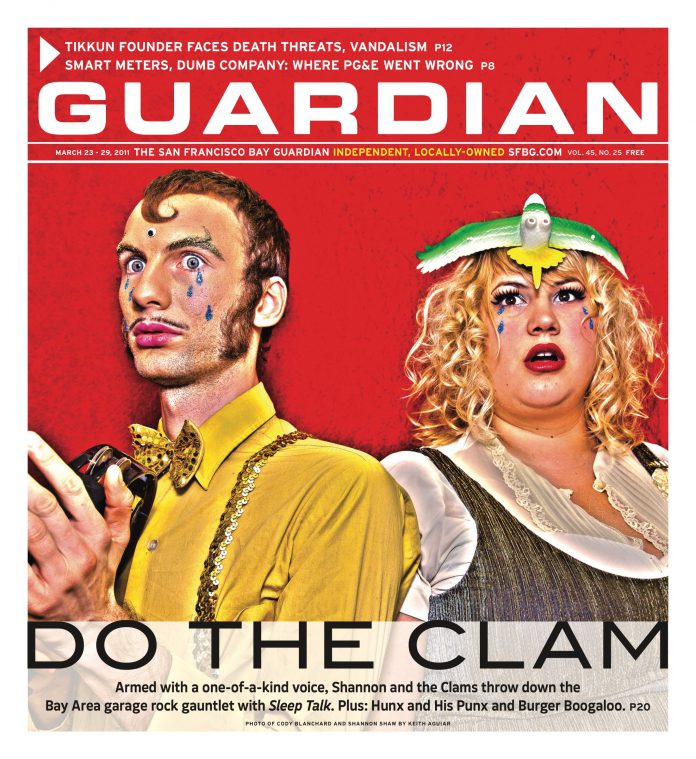arts@sfbg.com
DANCE Dance and the camera have a long-lasting love/hate relationship. Films that honor the art, such as 1948’s The Red Shoes or 1951’s An American in Paris with its extraordinary dream sequence, are rare. Although dancers like that their performances acquire an afterlife, they also hate giving up three-dimensionality for two-dimensional space. Nor are they fond of editing practices that alter continuity, control a viewer’s focus, and favor smiles over feet. Nonetheless, a recently discovered snippet of film that showed Diaghilev’s Ballets Russes in a blurry clip of Les Sylphides, apparently the only extant film of the legendary company, sent dance historians into a tizzy.
Now in its second annual incarnation, the San Francisco Dance Film Festival concerns itself with more contemporary dance films. The advent of inexpensive, lightweight cameras has made possible a new genre, “screendance,” which features choreography designed for the camera. Los Angeles and New York City have long had had festivals honoring these creations. Now the Bay Area, after previously unsuccessful attempts by presenters like Cynthia Pepper and Charlotte Shoemaker, is getting its own look at what’s floating out there. “We received 110 submissions from 25 countries,” producer Greta Schoenberg says of this year’s selection process.
Schoenberg has assembled a program in which shorts are bookended by longer films such as Victoria Marks’ ground-breaking 1993 Outside In and the San Francisco premiere of Finite and Infinite by RJ Muna, who is best known for his spectacularly airborne dance photography. Historian/critic Joanna Harris will also show rare films of Bay Area dance pioneers and work by avant-garde filmmaker Maya Deren.
In the Bay Area, a small but growing group of dancers is intrigued by the specific requirements of dancing for the camera. Among them are Private Freeman, Nol Simonse, and Maria Kotchekova, who in 2009 won the solo gold medal on the TV show Superstars of Dance. Schoenberg cast her film noir Nightingale, which receives its world premiere at the sold-out opening night gala, with local dancers. Freeman is one of them.
“I like the idea that film can focus a viewer as long as it wants,” Freeman says. “I also like that you have a 360-degree sense of space. You are working with different concepts of continuity and detail. At the same time, when you have several takes, you need to remember how exactly you had positioned your leg.”
Brevity, with most works typically lasting between three and 10 minutes, characterizes most “screendances” Even the experienced Mitchell Rose, who recently moved to the Bay Area to teach Dance on Camera at Mills College, stuck to this YouTube-friendly time frame when making his wondrous Modern Daydreams: Part One (2001).
The 18 selections in this year’s San Francisco Dance Film Festival stick to the norms. Marta Renzi’s Texas Plate (2007), a romance to music by singer-songwriter Patti Scialfa, is two minutes. A journey onto a wooded mountain, Stronger (2010), by the U.K.’s Wilkie Branson, takes four minutes. Dutch director Carmen Rozestraten’s trip into a Catalan woman’s dream world in After the Water the Clouds (2009) requires nine.
Neither Schoenberg nor documentary and experimental filmmaker Ben Pierce — a former San Francisco Ballet principal dancer who showed work in last year’s festival — can explain the logic behind the short format. Perhaps, they suggest, it’s what audiences want to see, and what festivals like theirs prefer to program. The time frames of YouTube, where a lot of these works end up, is a definite reason. Lack of financing for bigger projects may be another. It’s also possible that the creators of these collaborative ventures haven’t developed the necessary technical chops to master longer works yet.
One festival juror intrigued by the buzz around dance on screen is ODC associate director and choreographer KT Nelson. She finds herself fascinated by the idea of honing in very closely to the body (“Let’s say to the crook of an elbow”) or to create a work in a completely different setting (“Water, for instance”). She hasn’t jumped in yet — but there’s always next year.
SAN FRANCISCO DANCE FILM FESTIVAL
Thurs/24 through Sun/27, $10–$25 ($75–$125 for workshops)
See website for venues

